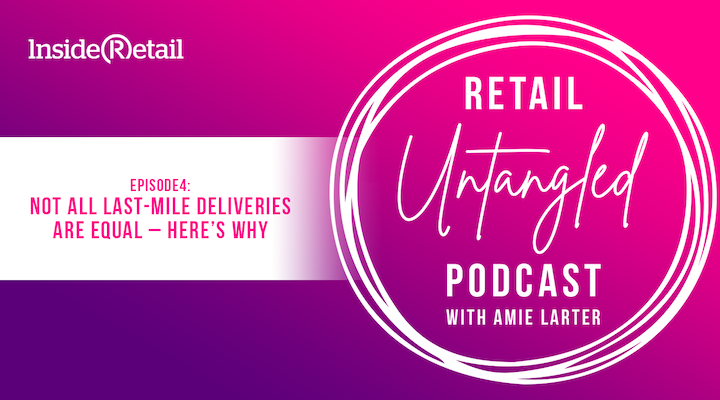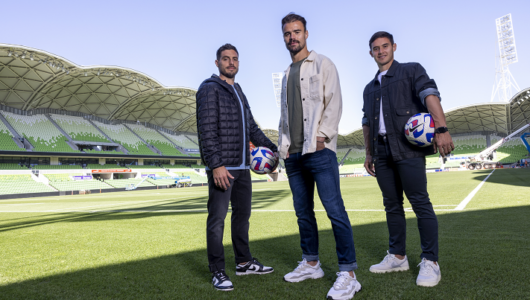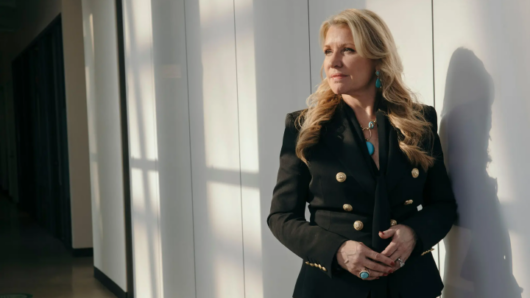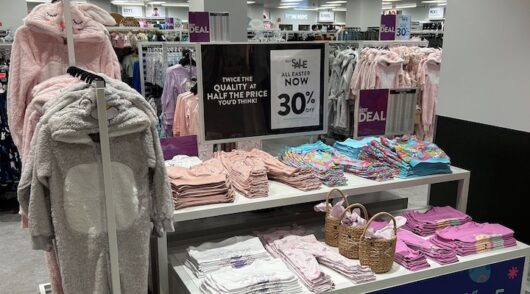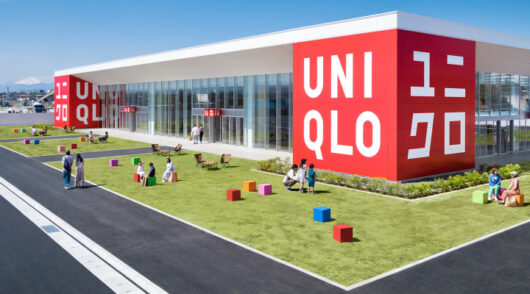In a crowded last-mile delivery market, dominated by a single major player, it might seem counterintuitive to launch a new entrant.
But Mark McGinley and Hoy Yen Hooper, co-founders of delivery startup Parca, have identified a space that is underserved despite growing demand from businesses and consumers alike for a solution: the last-mile delivery of big and bulky items.
“We thought that there was a gap in the big and bulky space in logistics, that has grown massively since Covid,” says McGinley.
During the fourth episode of Inside Retail’s podcast Retail Untangled, McGinley also talked with Amie Larter about delivery trends in the post-Covid era and highlights how much damage a poor delivery experience can have on a retailer’s brand reputation.
Parca, launched last November, specialises in items that can be handled by one person – such as flat pack furniture, sports equipment, trampolines, and baby products (think cots and prams).
Small parcels that companies like Australia Post and CouriersPlease specialise in can be processed by sorting equipment, fit onto conveyor belts and shipped by 1-tonne vans, often using the gig economy. But big and bulky items cannot be so easily managed – they need delivery by professionals with the right equipment, says McGinley. Enter Parca to fill that gap.
Research backs up the pair’s business case: 33 per cent of Australian consumers have bought big and bulky items during the past six months – and volumes are growing at an annual rate of around 18 per cent.
It’s a big section of the market, he contends. While consumers might not be ordering every day, such online purchases are getting more frequent.
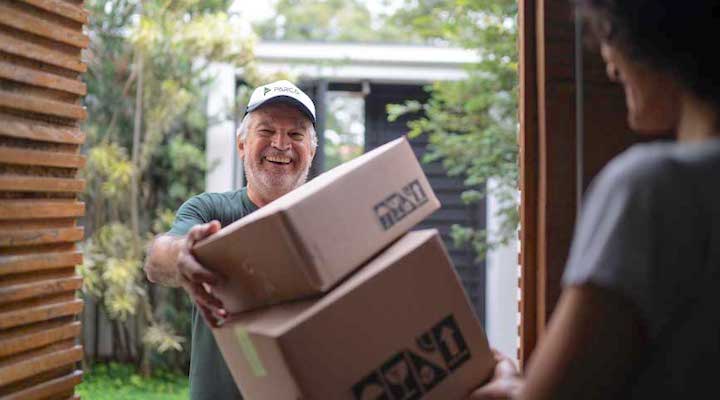
Parca has partnered with B2B delivery specialist Hi-Trans Express, a major investor with a significant nationwide infrastructure built over the past 55 years that Parca can use without having to build its own regional network – a major challenge in a country the size of Australia. That partnership has delivered Parca a unique point of difference for big and bulky last-mile delivery – it can service all of Australia – and given Hi-Trans a safe path into the B2C sector.
“It’s a really good fit,” says McGinley. “They’ve got big bulky trucks, they run their own line haul, they’ve got their own facilities, and that allows us to be agile and grow within the metro areas with our own people.”
McGinely’s co-founder at Parca is Hoy Yen Hooper, a former MD of DHL E-commerce who also worked with startups Bluethumb and Sendle and she was COO at CouriersPlease for several years. The new company’s senior management team boasts around 80 years of experience – but Parca won’t be venturing into that space, where Australia Post commands about 80 per cent market share and a plethora of rivals fight over the balance.
“It’s very competitive. It’s very hard as a startup – how would you compete against those companies? You don’t.”
The evolution of such a niche space in the last-mile delivery sector is just one aspect of a “massive transformation” McGinley has observed in a career spanning two decades in e-commerce logistics, including six years as CEO of CouriersPlease.
“That’s what keeps a lot of people in logistics because there is never a dull moment. There’s always new technology, there’s always growth.”
Parca’s recent research reflects some of that change, showing that amid the cost of living crisis, there is softening demand for fast deliveries with consumers willing to save money by waiting three days for their goods. However, shoppers still insist on consistency and reliability – while they may be happy to wait three days, if it does not arrive on time they will be annoyed.
How Covid changed the last-mile space
The advent of the Covid pandemic with its resulting lockdowns and offline shopping restrictions had a massive impact on the last-mile fulfilment industry. Leading CouriersPlease at the time, McGinley recalls the volume of orders the company was handling grew by the equivalent of about five years previous growth in just six months.
“It was incredible. We opened something like eight facilities – small micro fulfilment centres – and hired 300 extra franchisees. It wasn’t just us – every logistics company was doing the same, because it was one thing getting those volumes, but it was another thing actually delivering them.”
CouriersPlease was one of the first delivery companies to adopt contactless delivery, dispensing with signatures and other close interactions with customers to reduce the risk of viral transmission. Where retailers previously demanded delivery staff get a signature as proof of delivery, contactless services became acceptable overnight.
He recalls that consumers understood the pressures of logistics at the time of Covid, not helped in Victoria, in particular, where the government banned delivery companies from taking on more staff to handle the rapidly growing volumes because they did not want more people on the roads.
“So we had to cope with the people we had at that time. It was extremely difficult and yeah, customers were forgiving then. But they weren’t forgiving before Covid and they surely haven’t been forgiving since.”
This takes McGinley to the impact of social media and negative reviews in today’s environment.
“Customers are very demanding. CouriersPlease would have delivered 60 million parcels and we had something like 2000 reviews (on Google). Nobody gives you thanks for delivering a parcel, right? They only jump on when they’ve had a bad experience. So your whole business is reflected on 0.00001 per cent of your activities – that’s your reputation and it’s just something you have to live with.
In days gone by, they would phone call centres, but now they go on social media, share their bad experience with the world and get a response. They might also go to a retailer and say they don’t want to use a particular courier service again because of a bad delivery experience – and if the retailer gets enough of those complaints, it will be forced to look for other alternatives.
“As CEO of CouriersPlease, I responded directly or indirectly to every single social media post. You have to because if you don’t, it leads to more and more and more.”
The impact of a smooth delivery experience on the entire online shopping transaction cannot be underestimated.
“If a consumer orders a dress or a handbag or a laptop, it could be a $1000 purchase. For the delivery company, it could be a $5 delivery and for the driver, it could be a $2 delivery. It’s a $5 experience – but in the customer’s head, it’s a $1000 experience. As carriers, we are representing those brands, so we have to take that very seriously.
“Some of these companies have phenomenal websites, and phenomenal checkout experiences, with multiple ways to pay and options for freight. But if you have a bad delivery experience, that is what consumers remember about the brand, not the nice handbag or the nice dress, but that it took four days to get there or it arrived damaged,” McGinley says.
“So in fact, the delivery courier might be the only person that a consumer ever interacts personally with the brand. We take that very seriously and our challenge is to reflect the quality of the brand with our delivery experience.
“Think about it: you buy a $1000 handbag and some guy rocks up with a cigarette in his mouth and he’s all dirty and the van’s a mess and he throws a box at your doorstep – that’s the customer’s experience of that retailer. And retailers spend so much time and effort to manage that experience and compensate.”
If the customer complains about that, the retailers are obliged to placate the customer and offer discounts or vouchers to make amends because their brand is the most important thing to them – “and rightly so,” concludes McGinley.

